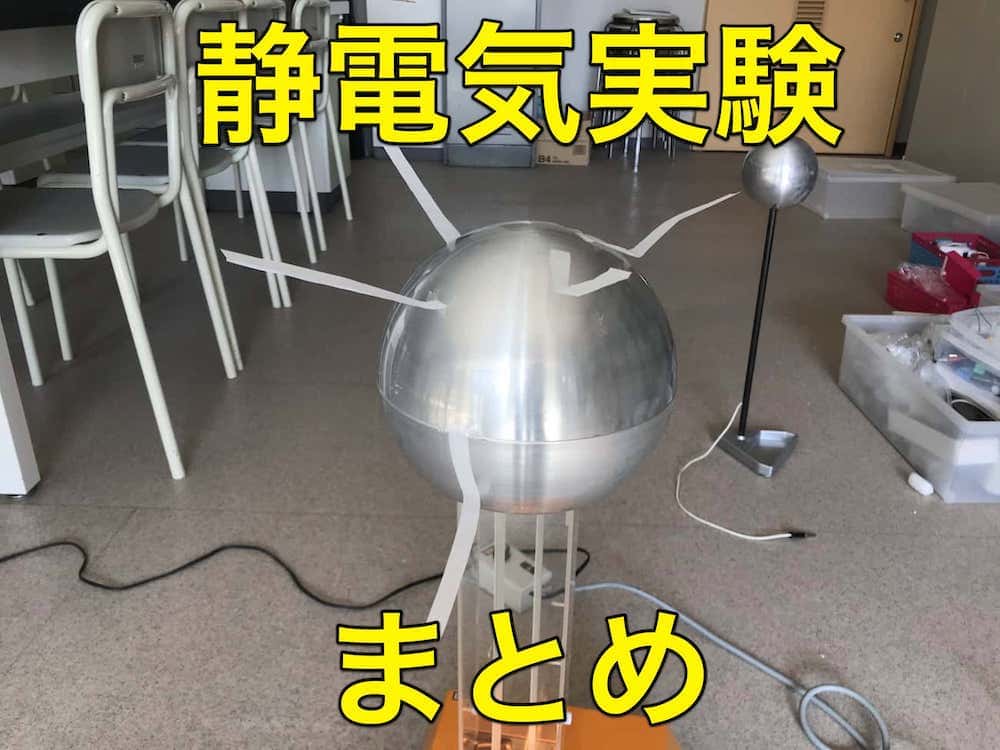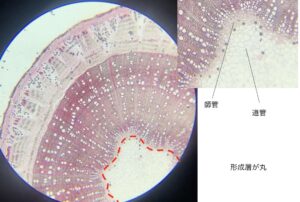Don’t Throw It Away! Can Packing Material Turn into a Magic Item? Rub It and Stick It to Your Body! (Static Electricity Experiment)
I’m Ken Kuwako, your science trainer. Every day is an experiment!
“ZAP!”
That small shock you feel on your fingertips when you’re about to touch a doorknob on a dry, winter day. It’s that annoying static electricity we’ve all experienced. But what if you could uncover its true identity and learn to control it like magic?
Turns out, that magic wand might be hidden in a delivery box that just arrived at your house. Yes, the very thing you’d normally throw away is the star of our show today!
Don’t Throw it Away! Uncover the Secret of Static Electricity with Packaging Materials
Static electricity, the one that makes the doorknob “zap” you in the winter, happens when two materials rub against each other, generating and storing an electric charge. And you can actually create this static electricity surprisingly easily with things you have at home.
The hero of our science experiment today is the very packaging material that gently protects your purchases! Although they are often thrown away after serving their purpose, they are the star players of static electricity experiments!
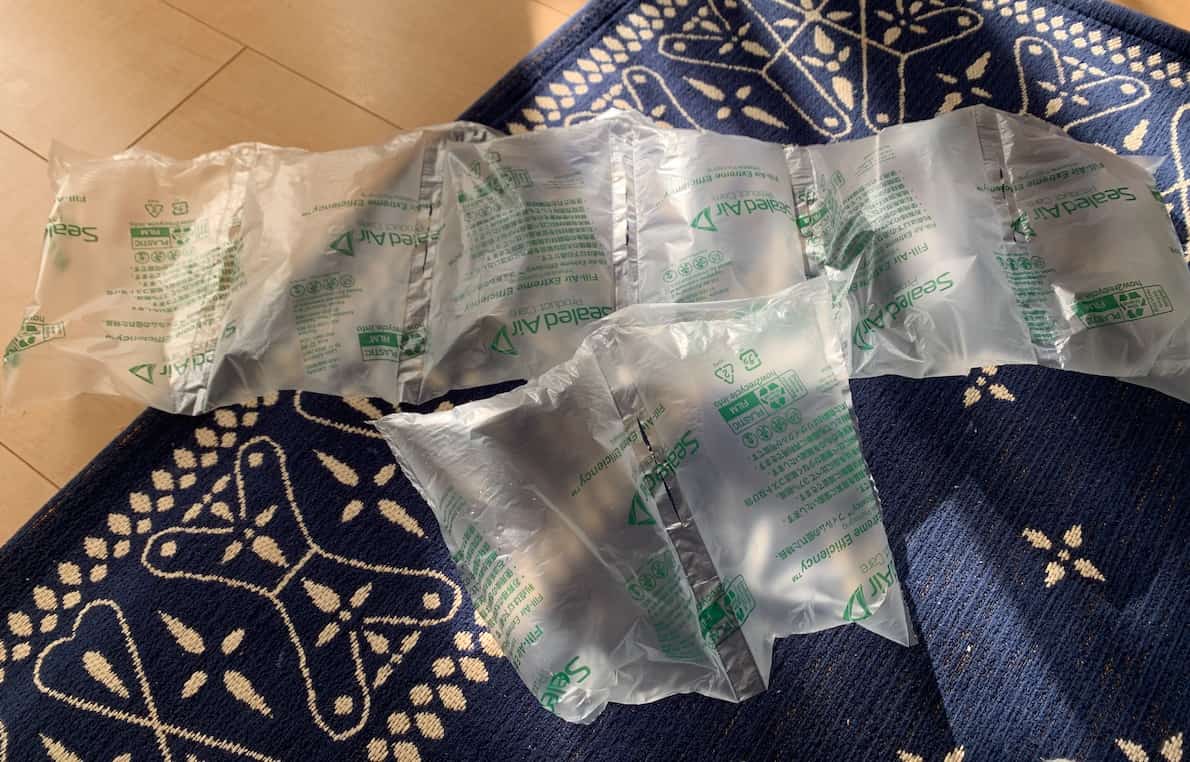
What You’ll Need
- Packaging material (something like a polystyrene foam sheet is recommended, not bubble wrap)
- A piece of clothing (a wool sweater is your best partner in this experiment!)
How to Do the Experiment: A Great Migration of Electrons in the Micro-World!
- Take the packaging material and rub it vigorously against a wool sweater or a rug for about 10 seconds.
- The magic is ready! Slowly move the rubbed packaging material closer to a wall or your face.
- And… wow! The packaging material sticks to the wall or your face as if it’s alive!
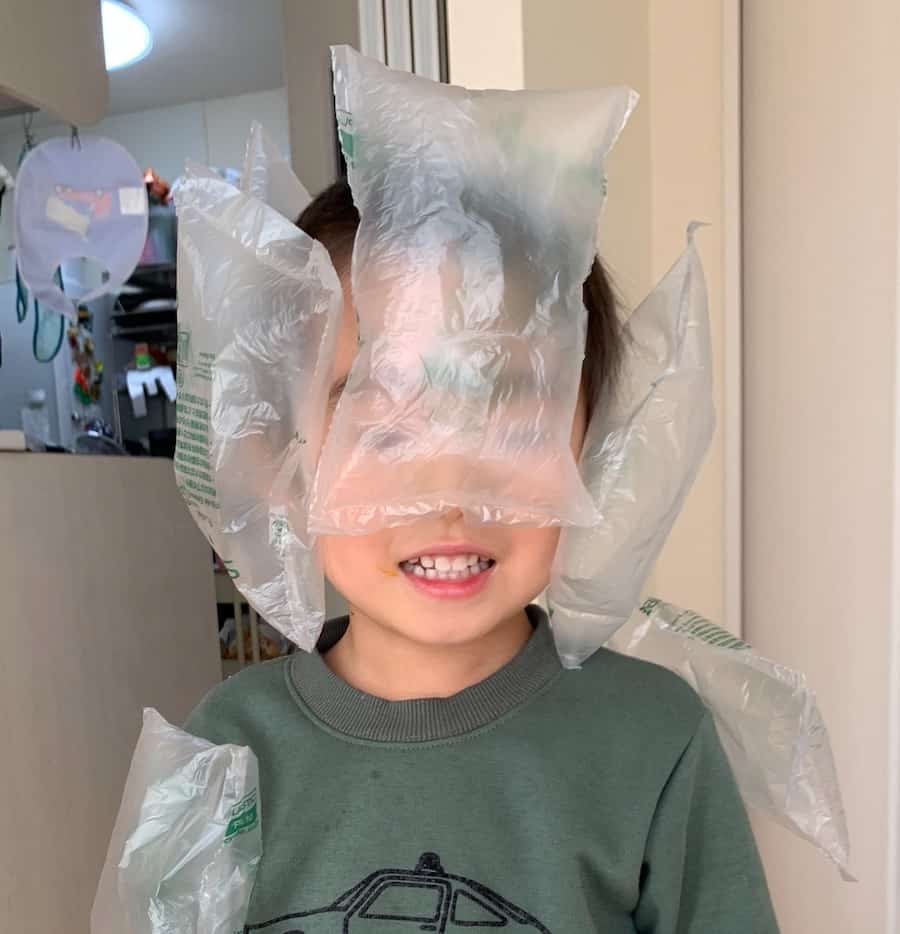
Here’s the fun part! It’s not just the wall—your kids can turn into “Static Electricity Ninjas” too!
Why Does It Stick? A Peek into the Micro-World!
Everything around us is made of tiny particles called “atoms.” Inside these atoms, there are “protons” with a positive (+) charge and “electrons” with a negative (-) charge.
Normally, the number of positive and negative charges is balanced. But when you rub two materials together, something amazing happens: the electrons actually move from one material to the other!
Different materials have different affinities for electrons. This is called the “triboelectric series.” The combination of wool and packaging material (polystyrene) is the perfect static electricity “dream team”! Wool easily gives up its electrons, and polystyrene readily accepts them.
When you rub them together, a huge number of electrons migrate from the wool sweater to the packaging material. As a result, the packaging material becomes “charged” with a negative (-) electric charge.
When you bring the negatively charged packaging material close to a wall, the positive (+) charges in the wall are drawn to the surface, as if they are thinking, “Oh, my friends have arrived!” Since positive and negative charges attract each other like magnets, the packaging material sticks to the wall. That’s the true power of static electricity!
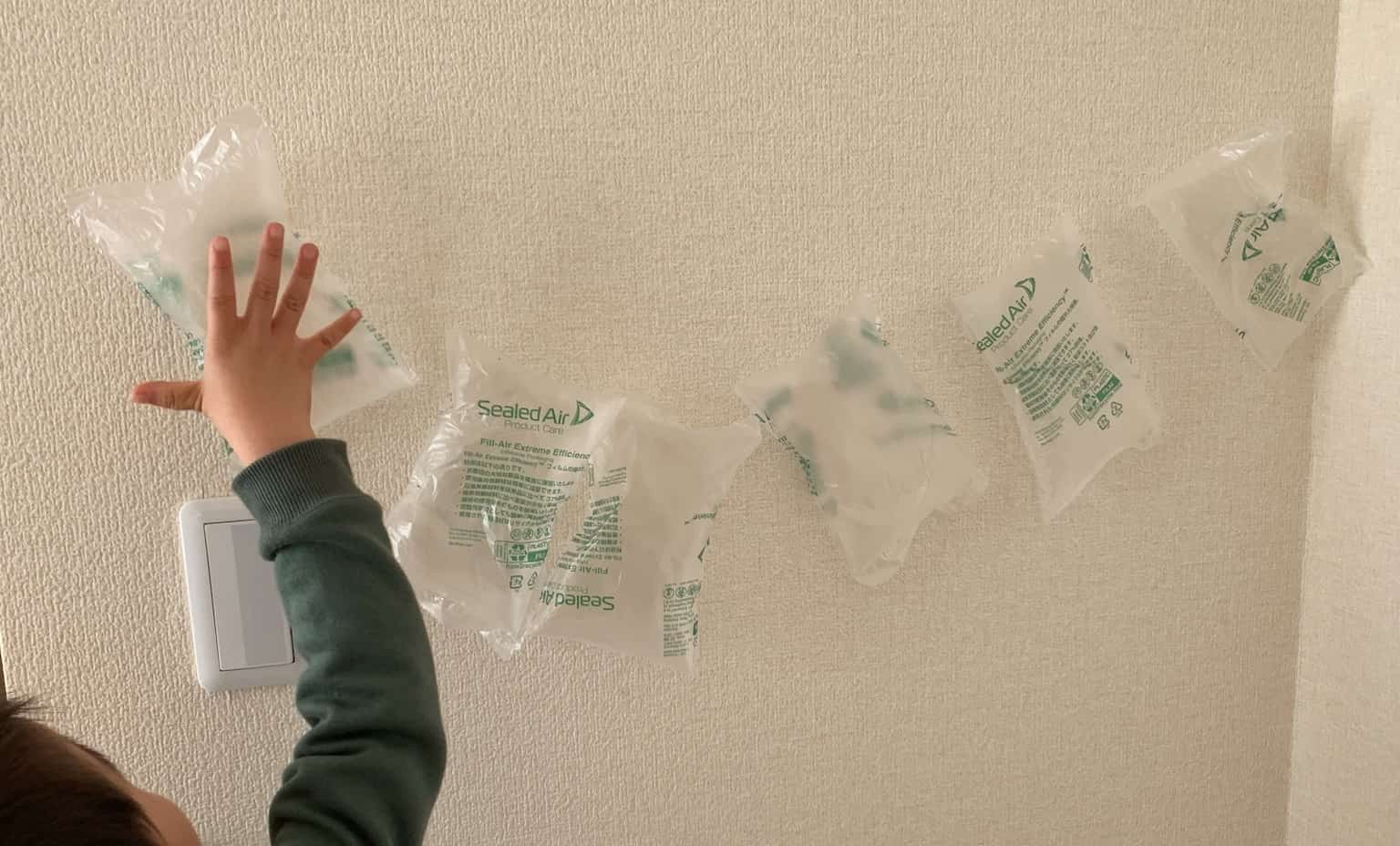
It’s not just the wall! It’ll also stick to a person’s body! Stick it on your kids, and you’ll have a “Static Electricity Man” that will make them jump for joy!
Why is this experiment best in “winter”?
If you thought, “This doesn’t work well in the summer,” you’re on the right track with your excellent scientific observation! The reason is humidity.
Moisture in the air is the arch-nemesis of static electricity. The water molecules in the air steal the electrons that have gathered on the packaging material.
On the other hand, in the dry air of winter, there’s less of a threat to the electrons, allowing them to accumulate in large amounts. That’s why winter is the best season for static electricity experiments!
Another famous experiment is rubbing a balloon on your hair to make it stand on end. Why don’t you try rubbing various things you have at home to find the ultimate “static electricity dream team”?
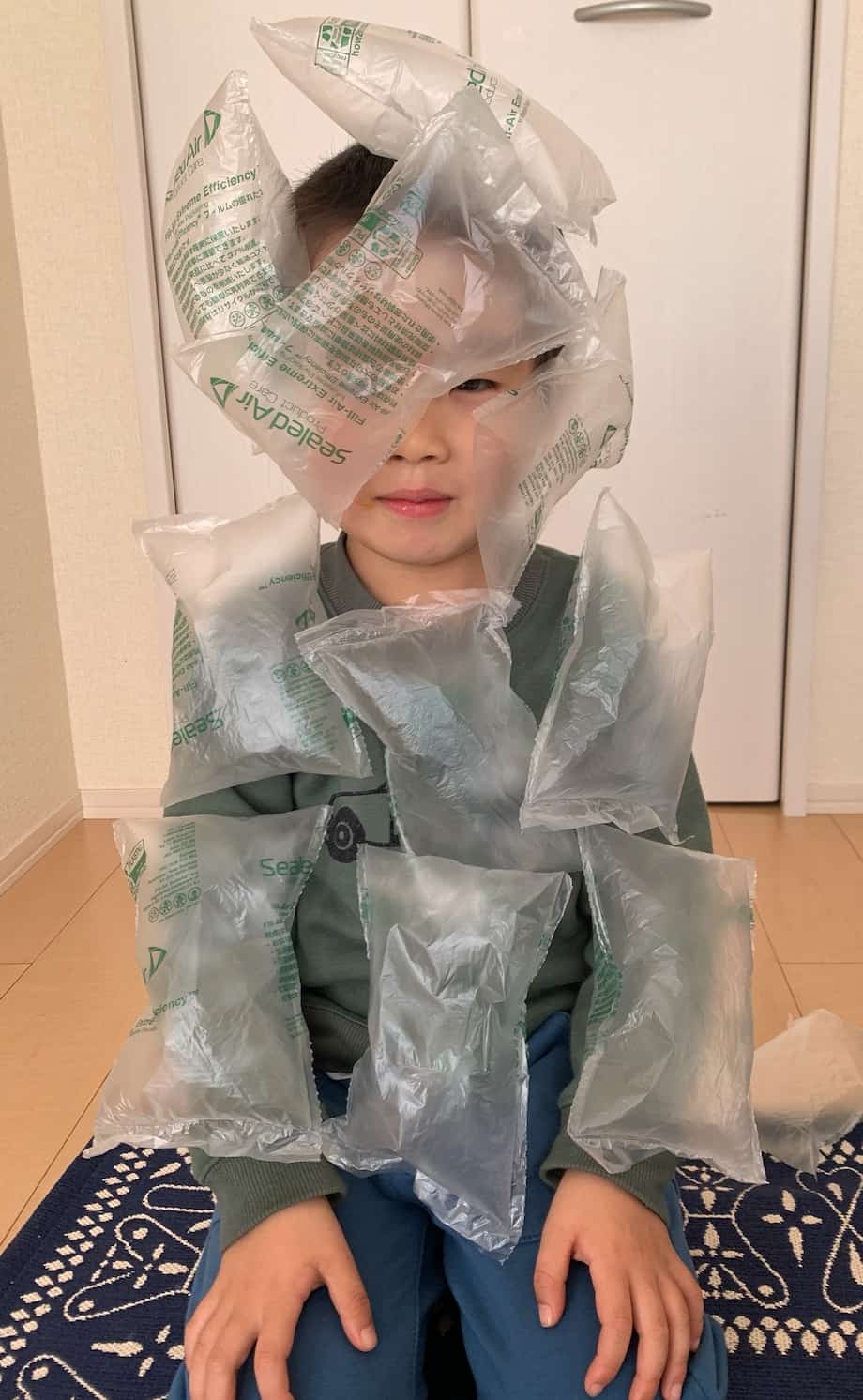
Brought to you by the man who controls static electricity.
【Advanced】The Power of Science for the Ultimate Static Electricity! The World of Van de Graaff
From simple experiments you can do at home, the world of science expands even further.
Using a static electricity generator called a “Van de Graaff,” you can do even more powerful and exciting experiments, like making all your hair stand on end!
I’ve actually had the pleasure of doing these experiments with some amazing people on TV shows, including Suzu Hirose, Ryohei Suzuki, Yasuko, and Osada and Matsuo from Chocolate Planets.
For an introduction to this astonishing world, click here.

※ Please note that experiments using a static electricity generator (Van de Graaff) must be conducted with the presence of a professional. Please be careful. For inquiries regarding static electricity experiments (workshops, TV supervision, appearances, etc.), please contact us here.
【Special Feature】You’ll Get Hooked! Static Electricity Experiments
About the Science Notebook
We make the wonders and fun of science more accessible! We’ve put together easy-to-understand explanations of fun science experiments you can do at home and tips for them. Feel free to search for more!
・For more about the author, Ken Kuwako, click here
・For various requests (writing, lectures, science workshops, TV supervision, appearances, etc.), click here
・Updates on articles are available on X! Follow us to check out the latest information

